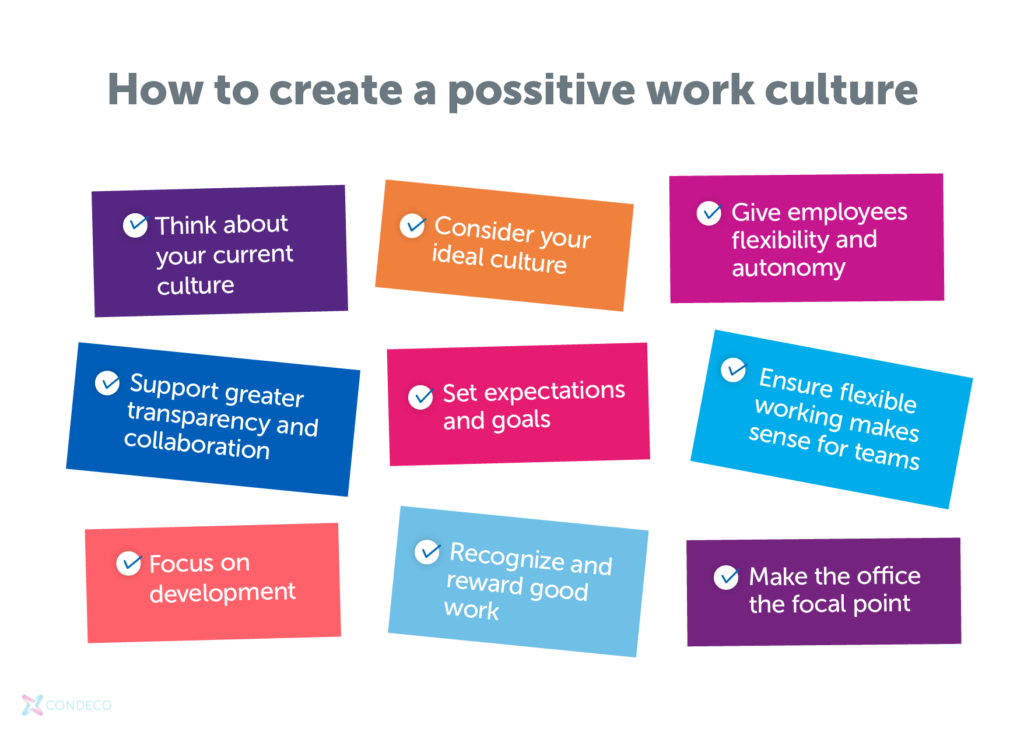Creating a positive work culture is essential for the growth and sustainability of any organization. It fosters a productive environment, encourages employee engagement, and leads to higher job satisfaction and retention rates. A positive work culture also improves team collaboration, creativity, and overall company performance. Here are key strategies to create and maintain a positive work culture:
1. Promote Open and Honest Communication
– Transparency:Keep lines of communication open. Ensure that employees feel comfortable sharing their ideas, concerns, and feedback. This can be facilitated through regular team meetings, one-on-one check-ins, and open-door policies.
– Active Listening: Encourage leaders and managers to practice active listening, showing employees that their voices are heard and valued.
2. Foster Inclusivity and Diversity
– Respectful Environment: Cultivate an environment where all employees feel respected and included, regardless of their background, identity, or position within the company.
– Diversity Initiatives: Implement diversity and inclusion programs that celebrate different cultures, perspectives, and ideas.
3. Encourage Work-Life Balance
– Flexible Work Arrangements: Offer flexible working hours, remote work options, or part-time schedules to help employees manage their personal and professional lives effectively.
– Mental Health Support: Provide access to mental health resources and encourage taking personal time off to prevent burnout.
4. Invest in Employee Development
– Training and Education: Offer opportunities for professional development, such as workshops, courses, and seminars, to help employees advance their skills and careers.
– Career Pathing: Work with employees to define clear career paths within the organization, showing them that they have a future at the company.
5. Recognize and Reward Achievements
– Acknowledgment: Regularly recognize and celebrate employee achievements, big and small. This can be done through shout-outs in company meetings, awards, or bonuses.
– Feedback:Provide constructive and positive feedback regularly, helping employees understand their progress and areas for improvement.
6. Build a Sense of Community
– Team-building Activities: Organize events and activities that promote teamwork and social interaction among employees.
– Volunteer Opportunities:Offer opportunities for employees to give back to their community together, reinforcing a sense of purpose and togetherness.
7. Lead by Example
– Leadership: Leaders should embody the values and behaviors they wish to see throughout the organization. Leading by example is crucial in setting the tone for a positive work culture.
8. Implement Wellness Programs
– Physical and Mental Wellness: Offer wellness programs that support both physical and mental health, such as gym memberships, yoga classes, or meditation sessions.
9.Continuous Improvement
-Feedback Loops:Establish mechanisms for continuous feedback on the work culture from employees. Use this feedback to make informed changes and improvements.
Conclusion
Creating a positive work culture is an ongoing effort that requires commitment from all levels of an organization. By prioritizing open communication, inclusivity, employee well-being, and development, companies can cultivate an environment where employees feel valued, supported, and motivated to contribute their best work. Remember, a positive work culture not only benefits employees but is also a key driver of organizational success.



